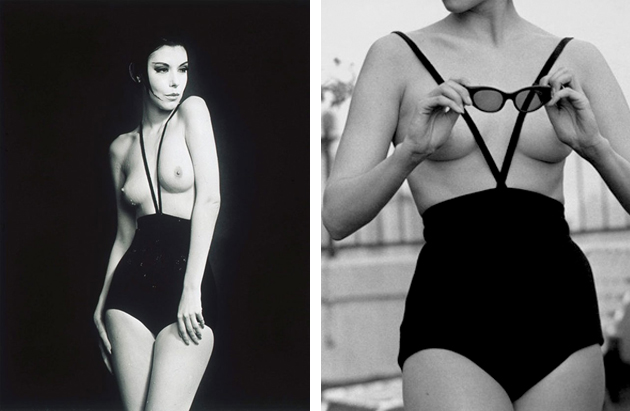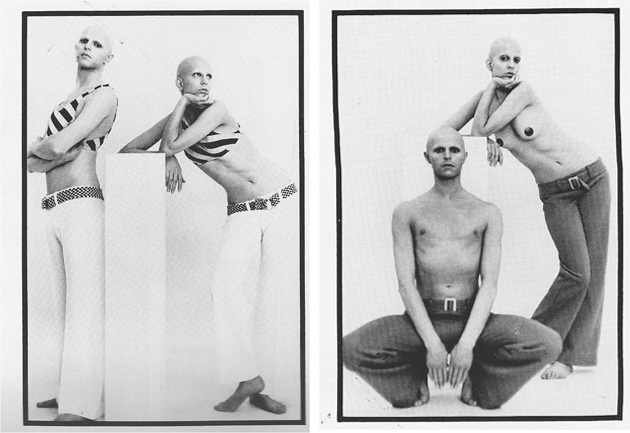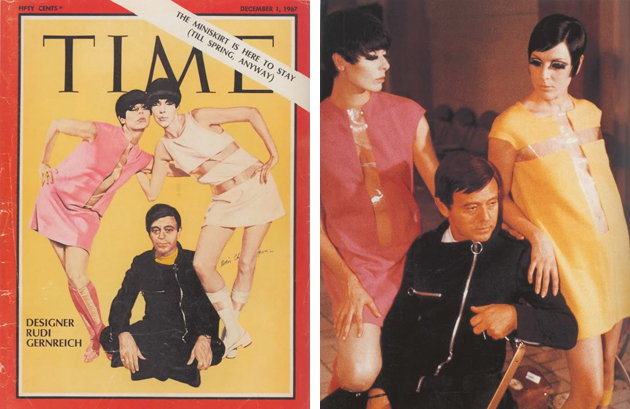
Swimsuits are seldom considered rightful members of the ‘clothes’ category. While clothes are supposed to cover the body, swimsuits are actually ‘what is left’ after we take our clothes off in stepping out of the shades of winter into warm summer sun. Swimsuits hold a double power: they both need to pass unnoticed, maintaining a certain level of decorum, as well as serving as attract attention, serving as an for the body. In the 60s, one designer stood out for his work on the idea of swimsuit seen as a communicative tool: Rudi Gernreich.

Gernreich is mainly remembered as the inventor of the monokini, a one-piece swimsuit leaving breasts exposed. The monokini caused public stir when it first appeared on the pages of Women’s Wear Daily in 1962, worn by the iconic Peggy Moffitt. Gernreich understood the power of the uncovered body, or better, the power of a body covered on strategic parts. For Gernreich, his designs served as tools for communicating his views on culture, gender and fashion itself. Conceived as a response to the repressive society of the time, the monokini was just the first dowel of a career filled with ‘scandals’: it was followed by a more extreme proposal, the pubikini, a swimsuit revealing pubic hair. In Gernreich’s futuristic view of fashion and the human being itself, sex was openly shown, while sensuality was totally absent.

Gernreich considered fashion as an open critique towards a conservative and ever more divided society, with its rigid class distinction that he could not stand. In 1970 edition of Time magazine, Gernreich gave his opinion about the future of fashion by showing a collection in which gender was completely negated: a sort of a utopian (or dystopian) future in which men and women, dressed and styled in the exact same way, could concentrate on themes deemed more important than superficiality of appearance and looks. His project was to be able to dress all people in the same way, to allow people to cross social boundaries and live in an equal society. At the same time, though, Gernreich knew this approach predicted the death of fashion; for him it was already finished. Even though Gernreich’s vision was too extreme to be accepted, it still remains interesting because of the importance of his creations on the development of social discourse of fashion.


